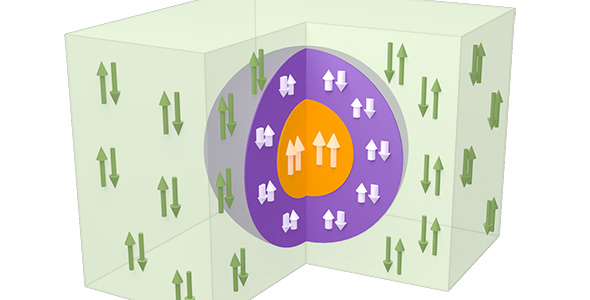A work published in Physical Review Letters, with ICREA Prof Josep Nogués, Group Leader at ICN2, as its last author, explains how an Antiferromagnetic Proximity Effect makes the Magnetic Stabilization possible above 400 K (126.85 degrees Celsius). This achievement might have crucial implications for ultrahigh density recording among other applications.

Thermal activation tends to destroy the magnetic stability of small magnetic nanoparticles, with crucial implications for ultrahigh density recording among other applications. A paper published in Physical Review Letters describes how low-blocking-temperature ferromagnetic Co nanoparticles become magnetically stable above 400 K (126.85 degrees Celsius) when embedded in a high-Néel-temperature antiferromagnetic (AFM) NiO matrix.
The work, with ICREA Prof Josep Nogués, Group Leader at the ICN2 Magnetic Nanostructures Group, as its last author, is a collaborative study involving researchers from the Universidad de Castilla-La Mancha (UCLM) (Spain) and the Université Grenoble Alpes (France). The remarkable enhancement achieved is due to a magnetic proximity effect between a thin CoO shell surrounding the Co nanoparticles and the NiO matrix.
Article reference:
José A. De Toro, Daniel P. Marques, Pablo Muniz, Vassil Skumryev, Jordi Sort, Dominique Givord, and Josep Nogués. High Temperature Magnetic Stabilization of Cobalt Nanoparticles by an Antiferromagnetic Proximity Effect. Phys. Rev. Lett. 115, 057201 – Published 28 July 2015.
http://journals.aps.org/prl/abstract/10.1103/PhysRevLett.115.057201
Information via Universidad de Castilla-La Mancha (UCLM): www.uclm.es/gabinete/ver_noticias.asp?id_noticia=12181

